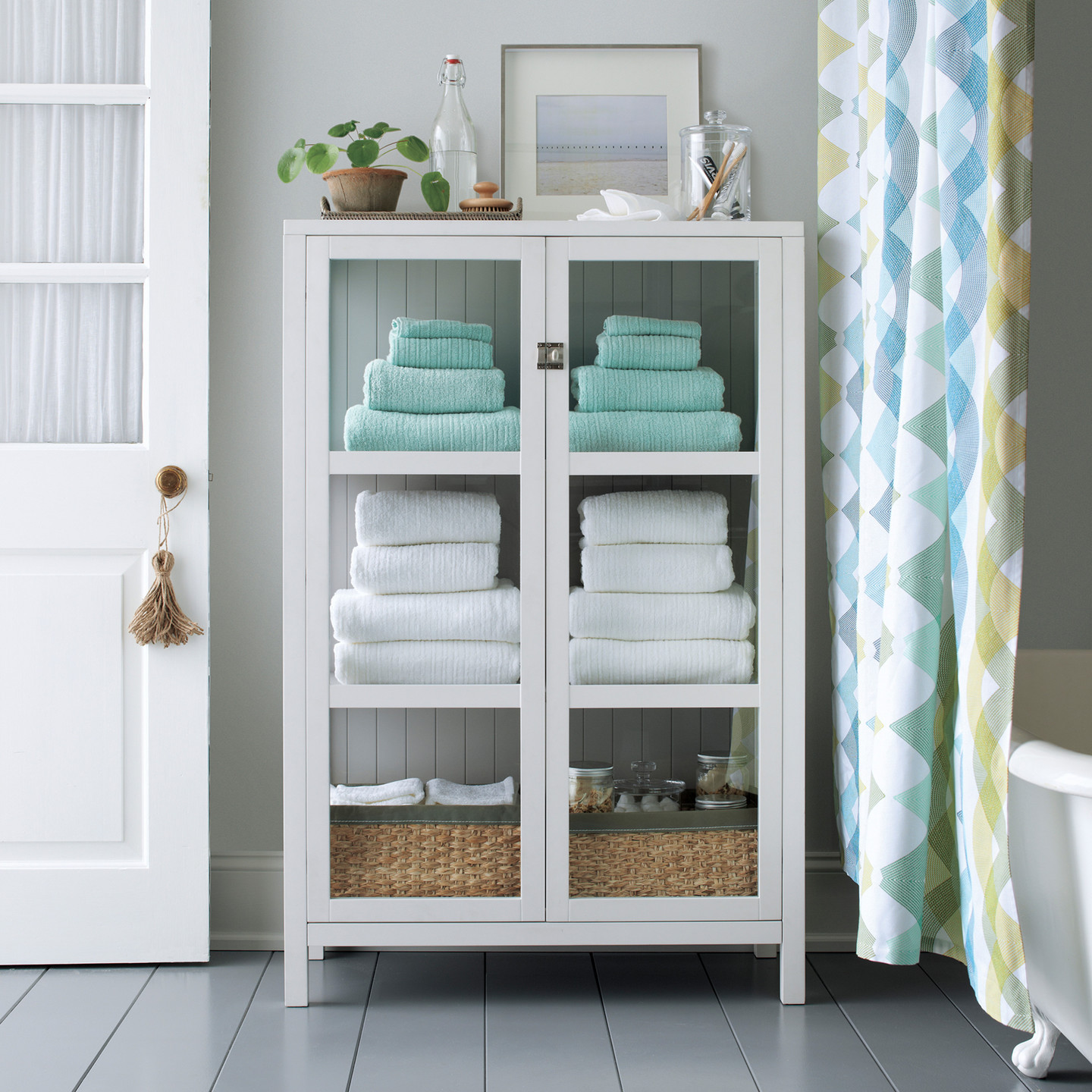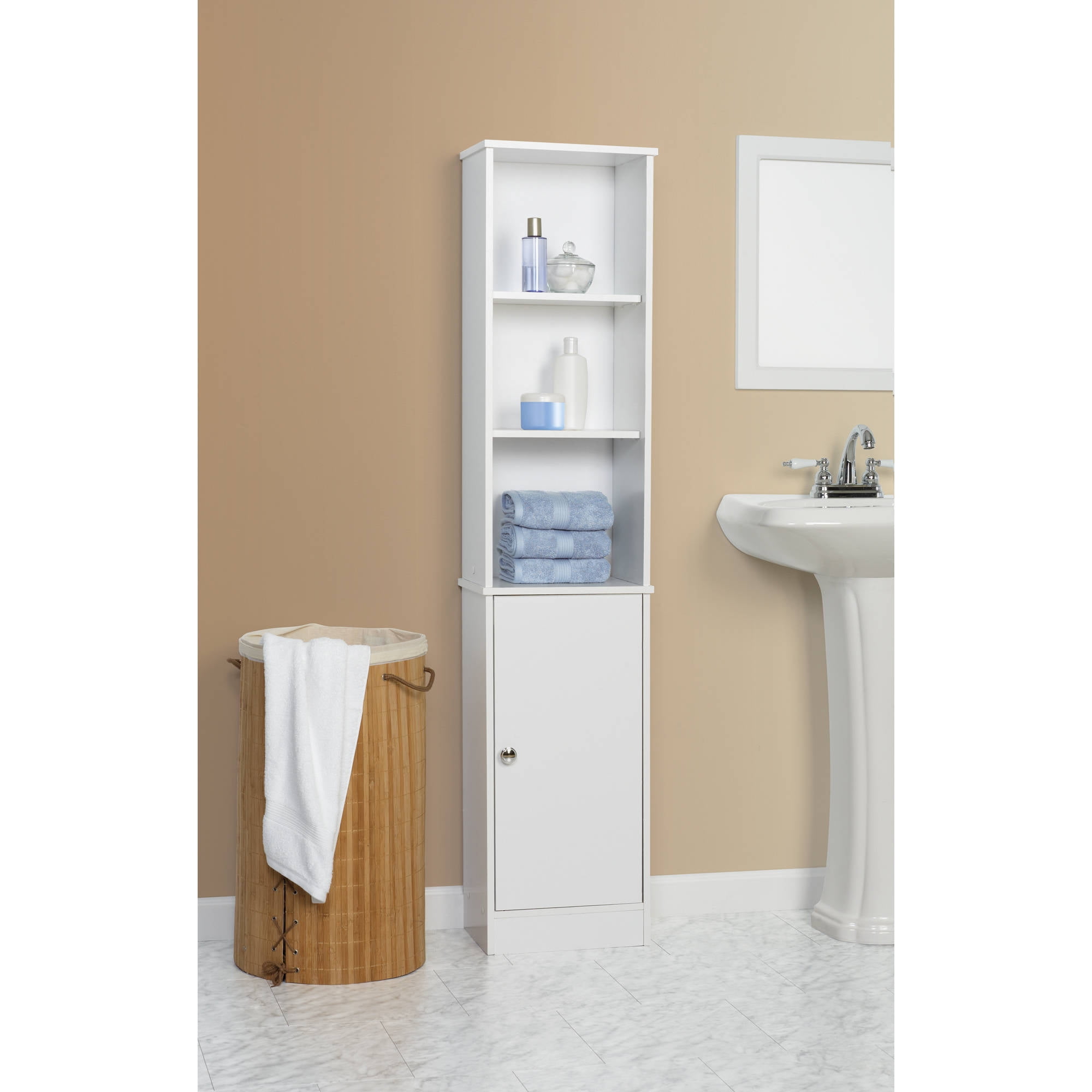Design & Functionality

A bathroom vanity with an attached linen tower is a space-saving solution that combines the functionality of a vanity with the storage capacity of a linen cabinet. This design maximizes the use of bathroom space, especially in smaller bathrooms, while offering a cohesive and aesthetically pleasing look.
Design Elements
The key design elements of a bathroom vanity with an attached linen tower include:
- Integrated Design: The vanity and linen tower are seamlessly connected, creating a unified look and maximizing space utilization.
- Space-Saving Features: The integrated design eliminates the need for separate pieces of furniture, reducing the overall footprint and maximizing floor space.
- Variety of Configurations: These vanities are available in various configurations, such as single or double sink vanities, with varying widths and heights to accommodate different bathroom sizes and layouts.
Materials Used
The materials used in manufacturing bathroom vanities with linen towers can significantly impact their durability, aesthetics, and price.
- Wood: Solid wood, such as oak, maple, and cherry, is known for its durability, beauty, and natural warmth. However, it can be more expensive than other options.
- Engineered Wood: Engineered wood, such as plywood and MDF, offers a more affordable alternative to solid wood, with good durability and moisture resistance. However, it may not have the same natural beauty and warmth as solid wood.
- Metal: Metal vanities, often made of stainless steel or aluminum, are durable, moisture-resistant, and easy to clean. They can be a good choice for modern bathrooms, but may not be as warm or traditional as wood vanities.
Storage Options
Linen towers offer a variety of storage options to keep your bathroom organized.
- Shelves: Open shelves provide easy access to frequently used items, such as towels and toiletries.
- Drawers: Drawers offer more discreet storage for items you want to keep out of sight, such as medications or personal care products.
- Baskets: Baskets can be used to store items like laundry or extra towels, adding a touch of rustic charm and organization.
Functionality Comparison
Comparing a vanity with an attached linen tower to a standalone vanity and linen cabinet highlights the advantages of the integrated design.
- Space Efficiency: The integrated design saves valuable floor space compared to separate vanity and linen cabinet units.
- Aesthetics: The unified look of an integrated vanity and linen tower creates a more cohesive and visually appealing bathroom space.
- Convenience: Having everything within easy reach eliminates the need to walk across the bathroom to access linen or toiletries.
Benefits & Considerations

A bathroom vanity with an attached linen tower offers a blend of practicality and style, enhancing your bathroom’s functionality and aesthetic appeal. This combination unit provides a streamlined solution for storage, organization, and visual harmony, creating a more efficient and enjoyable bathroom experience. However, it’s crucial to weigh the advantages against potential drawbacks before making a decision.
Benefits of a Vanity with a Linen Tower
A vanity with an attached linen tower offers several advantages that contribute to a more organized and aesthetically pleasing bathroom space.
- Increased Storage: The linen tower provides ample vertical storage space for towels, linens, toiletries, and other bathroom essentials, minimizing clutter and maximizing space utilization.
- Improved Organization: The integrated design promotes better organization by centralizing storage for bathroom items, making it easier to find what you need and maintain a tidy environment.
- Enhanced Aesthetics: The combined vanity and linen tower unit creates a cohesive and visually appealing design element, contributing to a more unified and stylish bathroom decor.
Considerations for Choosing a Vanity with a Linen Tower
While a vanity with a linen tower offers numerous benefits, certain factors need consideration to ensure it aligns with your specific bathroom needs and preferences.
- Space Constraints: The combined unit requires a larger footprint than a standard vanity, potentially limiting available floor space, especially in smaller bathrooms.
- Customization Options: The integrated design may limit customization options compared to separate vanity and linen tower units, restricting your choices for specific styles, materials, and finishes.
- Size and Style: Carefully consider the size and style of the vanity and linen tower to ensure they complement your bathroom’s dimensions and existing decor.
- Budget: A combined vanity and linen tower unit can be more expensive than purchasing separate units, so budget constraints should be considered.
Style & Installation: Bathroom Vanity With Attached Linen Tower

Bathroom vanities with attached linen towers offer a seamless blend of functionality and style, catering to diverse bathroom aesthetics. The design choices range from classic traditional styles to modern and contemporary interpretations, allowing for a personalized touch in any bathroom space.
Design Styles, Bathroom vanity with attached linen tower
The design style of a bathroom vanity with an attached linen tower plays a crucial role in shaping the overall ambiance of the bathroom. The choice of style should align with the existing décor and personal preferences.
- Traditional: Traditional bathroom vanities with attached linen towers often feature intricate carvings, ornate hardware, and warm wood tones. These vanities exude a timeless elegance and create a sense of sophistication. Examples include vanities with fluted legs, raised panel doors, and elaborate crown moldings.
- Modern: Modern bathroom vanities with attached linen towers prioritize clean lines, minimalist designs, and sleek finishes. They typically feature simple geometric shapes, chrome or brushed nickel hardware, and a focus on functionality. The linen tower might be integrated seamlessly into the vanity structure, creating a unified aesthetic.
- Contemporary: Contemporary bathroom vanities with attached linen towers embrace modern design principles but with a touch of artistic flair. They often feature bold colors, unique materials, and unconventional shapes. The linen tower might be a statement piece, showcasing a contrasting material or design element.
Visual Representation
Imagine a spacious bathroom with natural light streaming through a large window. The focal point is a sleek, modern vanity with an attached linen tower, both finished in a rich walnut wood. The vanity features clean lines and minimalist hardware, while the linen tower is integrated seamlessly into the vanity structure. A large, rectangular mirror hangs above the vanity, reflecting the light and amplifying the space. The countertop is made of polished white marble, providing a luxurious touch and a striking contrast to the dark wood. A pair of contemporary sconces flanking the mirror illuminate the space with a warm glow. On the countertop, you might find a sleek, minimalist soap dispenser, a set of coordinating brushed nickel toothbrush holders, and a decorative tray for storing essential toiletries. The linen tower provides ample storage for towels, bathrobes, and other bathroom necessities, keeping the space organized and clutter-free.
Installation Process
Installing a bathroom vanity with an attached linen tower requires careful planning and execution. The process involves several steps, including:
- Preparation: Begin by clearing the area where the vanity will be installed. Turn off the water supply to the bathroom and disconnect the existing plumbing. Remove the old vanity and dispose of it properly.
- Framing: Ensure that the wall where the vanity will be installed is properly framed to support the weight of the unit. If necessary, add additional framing or reinforcement to the wall.
- Plumbing: Connect the water supply lines to the vanity’s plumbing fixtures. Ensure that the connections are tight and secure to prevent leaks.
- Electrical: Install electrical outlets for any lighting fixtures or other electrical components associated with the vanity.
- Vanity Installation: Carefully position the vanity in the desired location. Level the vanity and secure it to the wall using appropriate fasteners.
- Countertop Installation: Install the countertop on the vanity. Ensure that the countertop is properly supported and secured.
- Finishing: Connect the sink and faucet to the vanity’s plumbing fixtures. Install the mirror, lighting fixtures, and any other accessories.
Importance of Measurements and Planning
Accurate measurements and meticulous planning are essential for a successful vanity installation.
Before purchasing a vanity, carefully measure the available space in your bathroom. Consider the width, depth, and height of the vanity, as well as the clearance needed for doors and drawers to open and close properly.
- Width: Measure the width of the wall where the vanity will be installed. Allow sufficient space on either side of the vanity for comfortable movement.
- Depth: Measure the depth of the wall where the vanity will be installed. Ensure that the vanity fits comfortably within the space and allows for adequate clearance for doors and drawers.
- Height: Measure the height of the wall where the vanity will be installed. Consider the height of the countertop and the desired height of the sink.
- Plumbing: Locate the existing plumbing lines and determine if they need to be relocated or modified to accommodate the new vanity.
- Electrical: Determine the location of existing electrical outlets and plan for any necessary modifications or additions to accommodate the new vanity.
